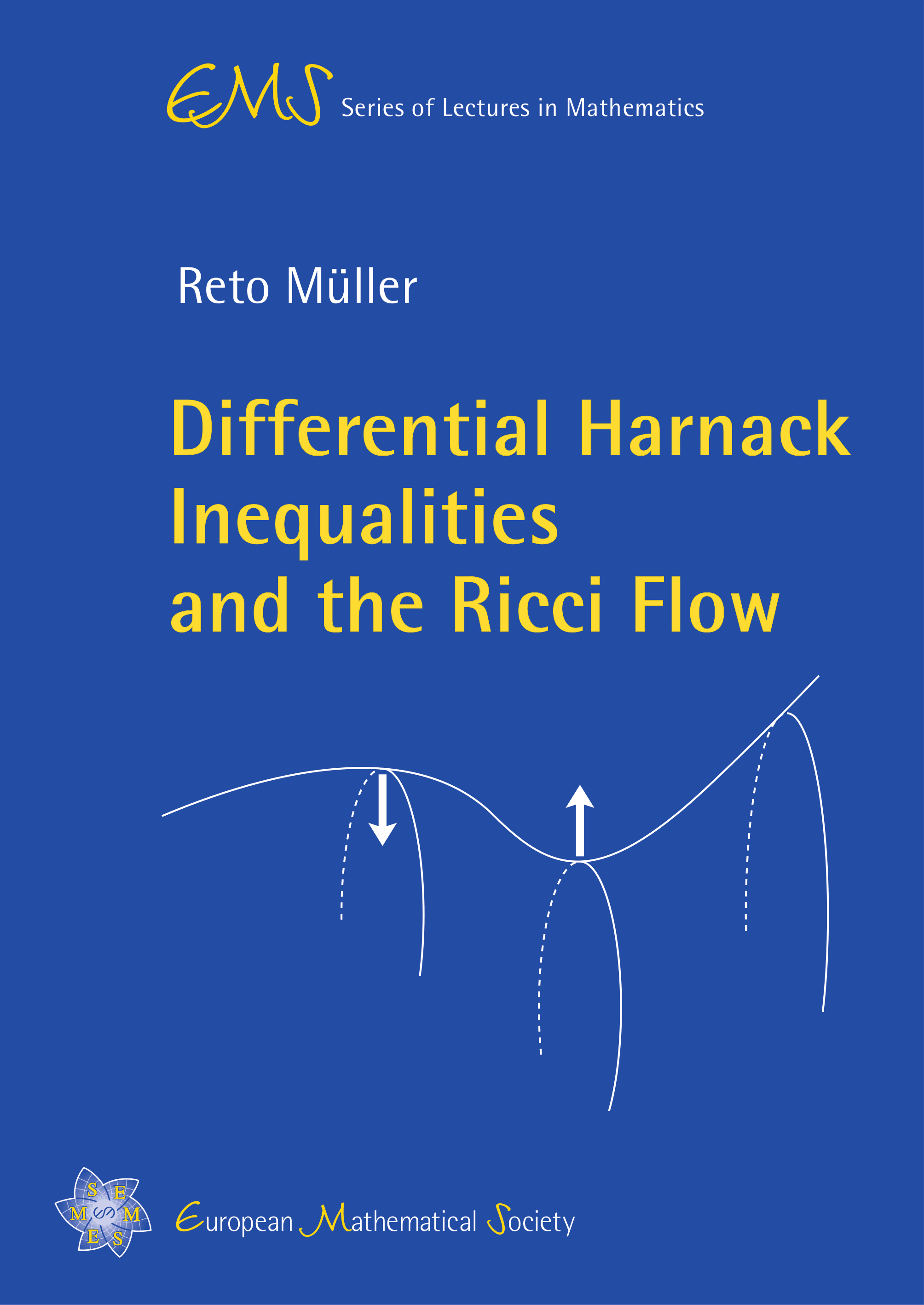Differential Harnack Inequalities and the Ricci Flow
Reto Müller
ETH Zürich

A subscription is required to access this book.
The classical Harnack inequalities play an important role in the study of parabolic partial differential equations. The idea of finding a differential version of such a classical Harnack inequality goes back to Peter Li and Shing Tung Yau, who introduced a pointwise gradient estimate for a solution of the linear heat equation on a manifold which leads to a classical Harnack type inequality if being integrated along a path. Their idea has been successfully adopted and generalized to (nonlinear) geometric heat flows such as mean curvature flow or Ricci flow; most of this work was done by Richard Hamilton. In 2002, Grisha Perelman presented a new kind of differential Harnack inequality which involves both the (adjoint) linear heat equation and the Ricci flow. This led to a completely new approach to the Ricci flow that allowed interpretation as a gradient flow which maximizes different entropy functionals. This approach forms the main analytic core of Perelman’s attempt to prove the Poincaré conjecture. It is, however, of completely independent interest and may as well prove useful in various other areas, such as, for instance, the theory of Kähler manifolds.
The goal of this book is to explain this analytic tool in full detail for the two examples of the linear heat equation and the Ricci flow. It begins with the original Li–Yau result, presents Hamilton's Harnack inequalities for the Ricci flow, and ends with Perelman's entropy formulas and space-time geodesics.
The text is a self-contained, modern introduction to the Ricci flow and the analytic methods to study it. It is primarily addressed to students who have a basic introductory knowledge of analysis and of Riemannian geometry and who are attracted to further study in geometric analysis. No previous knowledge of differential Harnack inequalities or the Ricci flow is required.